Sea Purslane is an edible sand trap. As the wind blows along the beach it carries sand. When the wind flows over Sea Purlane it slows a little and drops some sand. That’s how the dunes grow, grain by grain. In the photo above that is exactly what the Sea Purlane is doing, this case building a three-foot dune. Then it grows over the dune it is helping to create. Sea Purslane is edible any time of the year though older stems develop a woody core so pick young growth. Also look for Sea Purlane on the inland waterway side of the beach. That way you pick it where it is not building a dune. Salty, it can be eaten raw or cooked. It grills well. You can also take it home and plant it in your vegetable garden. It will happily grow there, but won’t be salty. To read more about Sea Purslane click here.
Also holding down the beach — literally — are Sea Oats. Their root system keeps the dune stable and they are among the first to take root in the beach sand. While not rare Sea Oats are protected because of their function in dune dynamics. You can read about them here. Least you tempt breaking the law by taking some seeds home and cultivating them there are also Wood Oats to be had. Wood Oats rarely get mentioned as an edible but they are. One often finds them in small colonies. Last I knew they were not protected. To read more about Wood Oats go here. They are also called Wood Oats, Indian Wood Oats, Inland Sea Oats, Upland Oats… you get the idea. Both of the above pictures were taken on Frederick Douglas Beach on Hutchinson Island which is off the east coast of Florida between Ft. Pierce and Stuart.
This was the weekend for Coco-plums. From Ft. Pierce to West Palm Beach the landscape was producing Coco-plums. It’s a common hedge plant where temperatures don’t get too cold. I also happened to have my video camera with me so there will be a Coco-plum video coming out this week or next. While following some “house for sale” signs in West Palm Beach I found a heavily ladened Coco-plum of the dark purple/black variety. However, planted right next to it was a white Coco-plum, not rare but also not commonly seen. I now know where two “white” shrubs are located. To me the flavor of the two Coco-plums are the same but the darker ones tend to age better and look better. To read about Coco-plums go here.
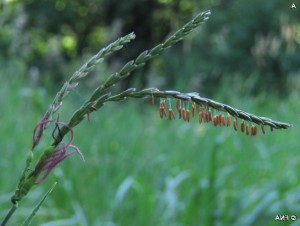
The females blossom are on the lower left, the male blossom on the upper right. Photo by Fontenella Nature Association.
Often edible species don’t catch ones eye until certain times of the year. Our edible wild yam is quite easy to spot in the fall when it has set on dark distorted “air potatoes.” The Easter Coral Bean can remain well-hidden as an understory tree until its long red, edible blossoms give it away in the spring. Eastern Gammagrass is likewise overlooked except this time of year when it is in blossom. It’s a grass found in landscaping as as one that has escaped into the wild. This weekend it was in blossom in a landscaped area next to where I had two classes in Ft. Pierce. What gives Gammagrass away this time of year is actually the ruddy male blossom. They tend to line up on one side of the seed head making the grass showy for a couple of weeks. Not to be outdone the female blossom near the bottom of the seed pike are long and frilly as well. Gammagrass has if not one of the highest the highest amount of protein for a grass seed, some 27 percent. To read about Gammagrass click here.
Uncoming classes: NEW! Saturday, June 1st: Hammock Park, 1900 San Mateo Dr, Dunedin, FL 34698, 9 a.m., NEW! Sunday, June 2nd, Red Bug Slough Preserve, 5200 Beneva Road, Sarasota, FL, 34233, 9 a.m.
Below is a good article written by John Roach for National Geographic on eating Cicadas (yes, it could have been worse given his name.) On my website — whose official title is “Eat The Weeds And Other Things Too” — I have several articles about eating various insects. However, one article that has 50 of them is here.
One point to consider is where you get your possible Cicada meal. I would not want a Cicada that has been marinating in my neighbor’s well-chemicalized putting-green lawn for 17 years. It might even glow in the dark. If you do find clean Cicadas once cooked chew thoroughly or you (and your dog) can choke on the tough parts… it’s kind of like eating an entire prawn, shell and all (the shell of which is full of flavor and the antioxidant astaxanthin.) Cicadas are a crispy crunch, with an almond-like flavor that the Iroquois Indians considered a delicacy. Think of them as flying shrimp, self-delivered and free of charge. Now for Mr. Roaches’ entertaining article:
‘Anyone hoping to spice up their gluten-free diet need look only at the billions of beady-eyed, shrimp-size cicadas currently emerging from the ground in the eastern United States.
“They definitely would be gluten free … they do not feed on wheat,” said Gene Kritsky, a biologist and cicada expert at the College of Mount St. Joseph in Cincinnati, Ohio. The bugs are also high in protein, low in fat, and low in carbohydrates, he added.
Members of Brood II, one of the largest groups of periodical cicadas, have been crawling out of the ground and carpeting trees from North Carolina to Connecticut since early May. By July, they will be gone—not to be heard from again for 17 years.
Cicadas spend most of their lives underground sucking sap from tree roots. The plant-based diet gives them a green, asparagus-like flavor, especially when eaten raw or boiled, according to Kristky, who prefers his Brood II bugs blanched and tossed into a leafy green salad like chunks of chicken.
Gross? Not really, said Jenna Jadin, an entomologist who wrote the online cookbook Cicada-Licious: Cooking and Enjoying Periodical Cicada in 2004 while a graduate student at the University of Maryland in College Park.
She notes in her book that crawfish, lobster, crab, and shrimp are part of the same biological phylum—arthropods—as insects. “So popping a big juicy beetle, cricket, or cicada into your mouth is only a step away,” Jadin writes. (Related: “U.N. Urges Eating Insects; 8 Popular Bugs to Try.”)
The entomologist is now a science and technology policy fellow at the American Association for the Advancement of Science in Washington, D.C. She’s been too busy to add recipes to her cookbook, but when asked if she had new ideas for 2013 Brood II emergence, she suggested a cicada-inspired cocktail.
“Right now, craft cocktails are a big deal, so a cocktail with a candied cicada in it would be a good update,” she said. The next day, she had the recipe in hand:
Red Eyes
2 shots vodka
½ shot Campari
½ shot extra-dry vermouth
1 shot fresh orange juice
Shake all ingredients together with ice in a shaker and strain into a chilled glass. Garnish with two candied cicadas* on a stick, if desired.
More of Jadin’s ideas include Martha Stewart-inspired Maple Cicada Cupcakes—roast the bugs for 10 to 20 minutes, then stir them into a cupcake batter with a wooden spoon—and Cicada Bahn Mi, a Vietnamese-style sandwich with cicadas first blanched, then sautéed until brown.
Healthy Eating?
Jadin’s cookbook begins with a disclaimer from the University of Maryland asking would-be cicada eaters to first consult a doctor because, like with all foods, certain individuals may have an allergic reaction.
More recent research indicates that mercury from sources such as coal-fired power plants accumulates in the bodies of periodical cicadas, which spend 13 or 17 years underground. “Now, whether that is a concern or not, I would say no,” Jadin said.
People already eat fish, which are known to have mercury in their bodies, she noted. Federal guidelines recommend limiting fish intake, especially for pregnant women. The same would probably hold true for cicadas, though there are no official guidelines.
“I don’t think the average person who wants to go out and enjoy the cicada emergence by having a meal of cicadas or two [has] anything to worry about,” she said.
Her only true concern is the cicadas that emerge in areas heavily treated with pesticides and herbicides, as the insects could have absorbed the chemicals in their bodies.
“Given that it’s likely people won’t be feasting on cicadas, just eating a few of them, even if they have [absorbed] chemicals, it’s no worse than eating fish from the Great Lakes,” Jadin said. “If [people] survived that, they’ll probably survive eating a plateful of cicada.”
And no, there is no bona fide business out there marketing organic cicadas, she added.
The only consequence of cicada feasting that Kritsky is aware of is overindulgence, especially on the part of the family dog or favorite backyard squirrel. The animals may be enticed to gobble cicadas so quickly that the bugs could block the animals’ throats.
“Just imagine how you would react if inundated with thousands of flying Hershey’s Kisses,” Kritsky said. “You might go nuts. I’d go nuts. That’s what happens to dogs or squirrels.”
Eaten in moderation, most experts agree that cicadas—like most insects—are a good source of protein: about the same amount per pound as red meat. However, official studies on cicada nutrition are lacking, noted Jadin.
Cicada Preparation
So, are you ready to try a cicada? Aspiring gourmands must first collect the raw ingredients. The insects are best eaten just after the nymphs break open their skin and before their exoskeleton turns black and hard, cicada aficionados say.
These newly hatched cicadas are called tenerals. Jadin said they are easiest to collect in the early morning hours, just after the insects emerge from the ground but before they crawl up a tree, where they are harder to reach.
If tenerals are unavailable, the next best menu item is adult females. Their bellies are fat and full of nutritious eggs.
Adult males, however, offer little to eat. More crunch than munch, their abdomens are hollow. (This enables the flirtatious tunes they strum on body structures known as tymbals to resonate.) With raw cicadas in hand, preparation is a matter of chef’s choice.
Kritsky said, “Most people like them deep fried and dipped in a sauce like a hot mustard or cocktail sauce.” Other people boil or blanch them.
Jadin said cicadas take on a “nutty” flavor when roasted. She notes that many cicada recipes call for a lot of spices and sauce, which usually winds up being the dominant flavor.
Now on to the wine: red or white? Jadin, who might be found with a cicada-infused cocktail in hand before the main feast, said neither. “I think anything pairs well with a high-alcoholic Belgian beer, but that’s just my opinion.”
*Candied Cicadas
1 pound cicadas
1 cup white sugar
2 tsp ground cinnamon
¼ tsp salt
3 tbsp milk
1 tsp vanilla extract
Preheat oven to 350°F (177°C). Spread cicadas in a single layer over a baking sheet. Roast for approximately 15-20 minutes, or until the cicadas start to turn brown and are thoroughly dried out.
Stir together sugar, cinnamon, salt, and milk in a medium saucepan. Cook over medium-high heat for eight minutes, or until the mixture reaches the soft ball stage at 236°F (113°C). Remove from heat, and stir in vanilla immediately.
Add cicadas to sugar syrup, and stir to coat well. Spoon onto waxed paper, and immediately separate cicadas with a fork. Cool and store in airtight containers.’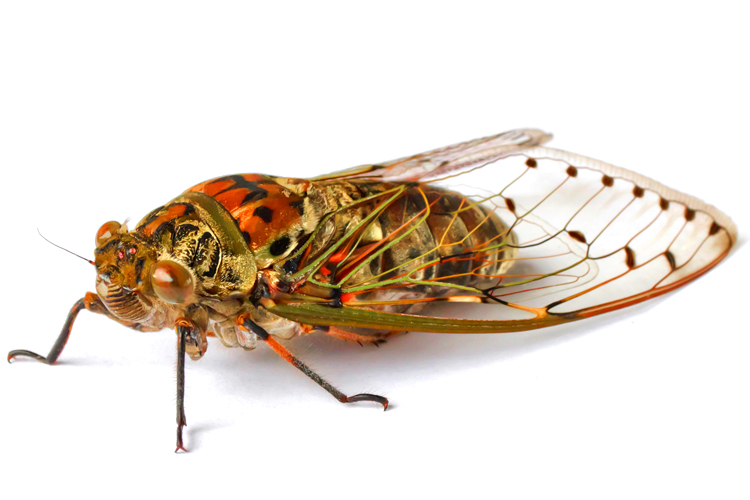

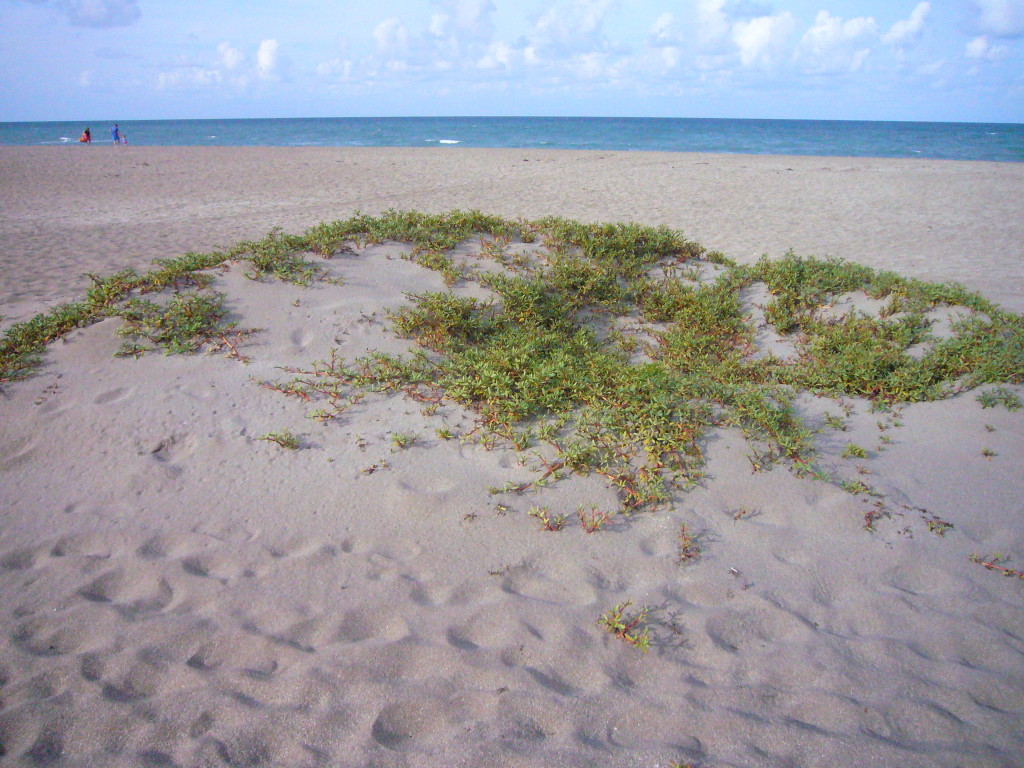
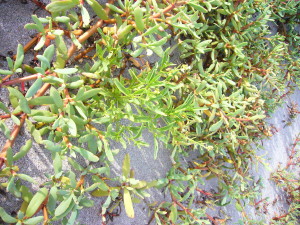
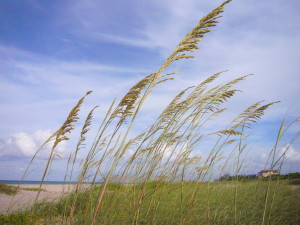
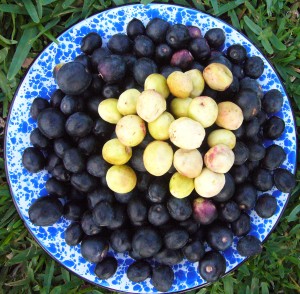
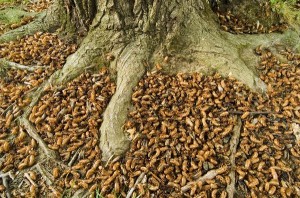
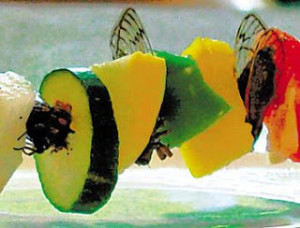
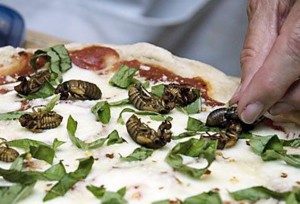
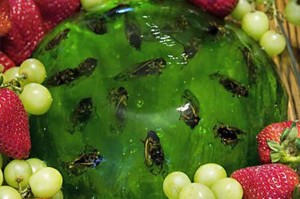
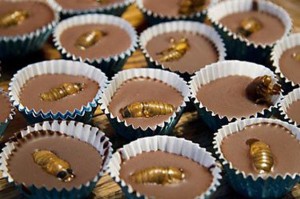
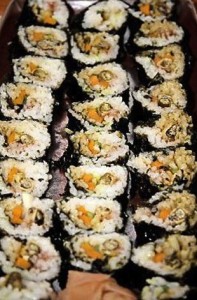
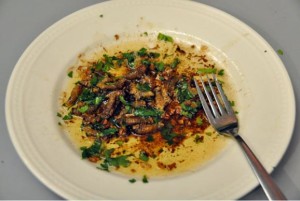

Awesome – love the entomophagy. I’ve been planning to start raising mealworms for food. I think that would be something good for me to cover in one my survival gardening articles.
Something like: “Forget Rabbits and Chickens: Meet Your Protein Needs In Less than 16 Square Feet!!!”
I dunno if it’ll fly, though. I do know that some of the local grasshoppers taste great.
“While following some “house for sale” signs in West Palm Beach”
Is there a relocation in your future?
And sorry I missed Monday’s class, for some unknown reason my calendar has 2pm listed instead of 10am. I hope to catch you next time!
db
oh gross!! I’ll take the plums, please.
I’ve never eaten bugs, but It is nice to know which ones are ateable if I should ever have to.
Well, I’d like to try the cicada but what is missing is how to “put them to sleep”. I don’t think I’d just fry them as they might hop out of the pan. Isn’t it possible to put them in the freezer and then, once they are quiet, fry them? Anyone with some advice?
While living in Maryland my father collected adult cicadas and froze them in a coffee can until the first snow when he put them out for the birds that still remained. I think if he’d known they were edible we might have had a taste. He was adventurous like that.
We have year round cicadas here in Florida. Are they just as edible?
Yes, our local cicadas are edible.
Apart from the useful information on the mechanism of the dune creation, truly I’ve gained much on reading about Sea purslane , Sesuvium portulacastrum, and in particular about the hormone “Ecdysteron” which has some important roles impotant of which , I think are: athelitic performance enhancement in humans, metamorphosis in animals and protection of some plants from pesticides. My interest in this hormone arises from what I thought to get some linkage with the thyroid gland hormone – Thyroxine in humans. In fact I know of many people in my country in western Sudan and, in general, many others in neigbouring continental areas ( far away from sea) who suffer from goiter due to imbalance of thyroxine.This link is the element Iodine that occurs in sea edible products of both plant and animal origin. However, I could not trace iodine as a component in Sea purslane though there are various dietary sea plants possessing iodine to keep coastal people well nourished and protected against syndromes like goiter or cretinism. Among these plants are: Nori(porphyra), Arame (Eisenia bicyclis) , Bladder norack and Sea moss. Worthwhile to note the tolerable ievel of intake for iodine is at 1,100mcg/day ;excess or deficiency is not favoured.